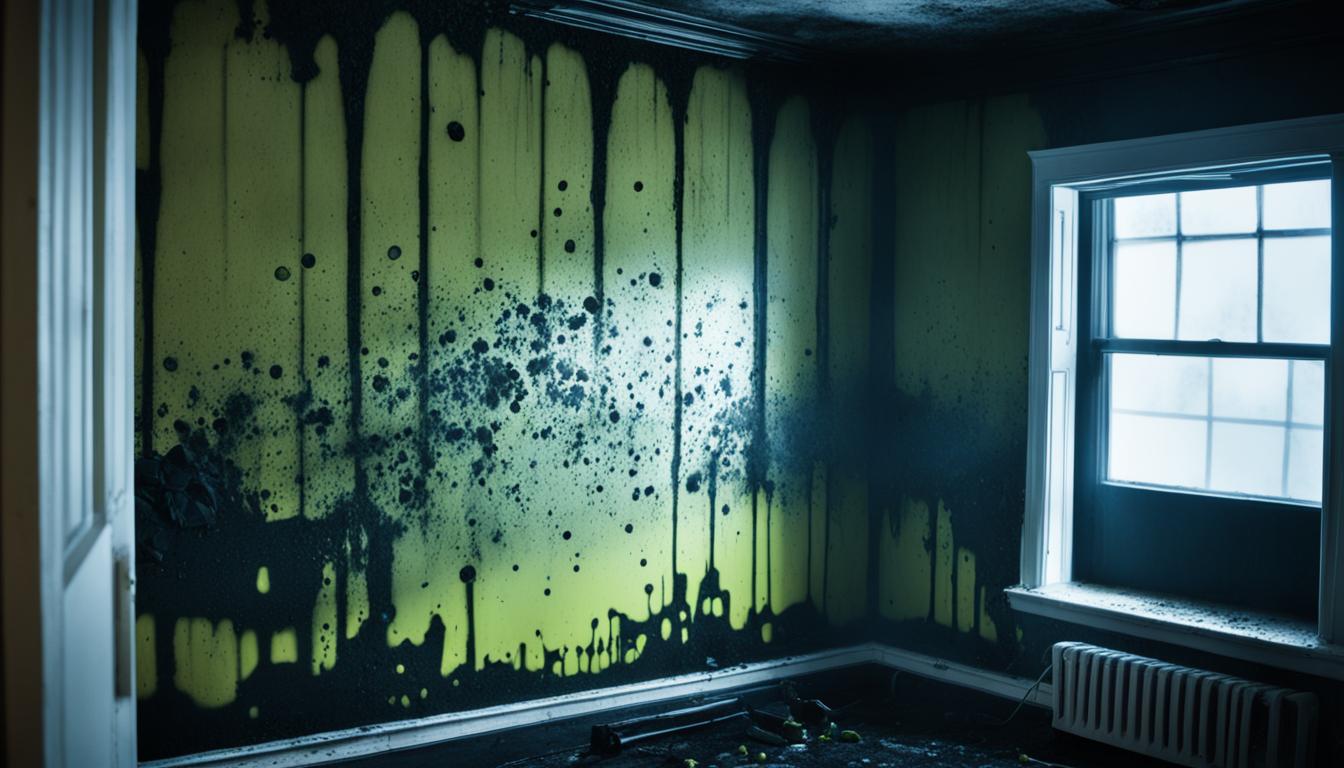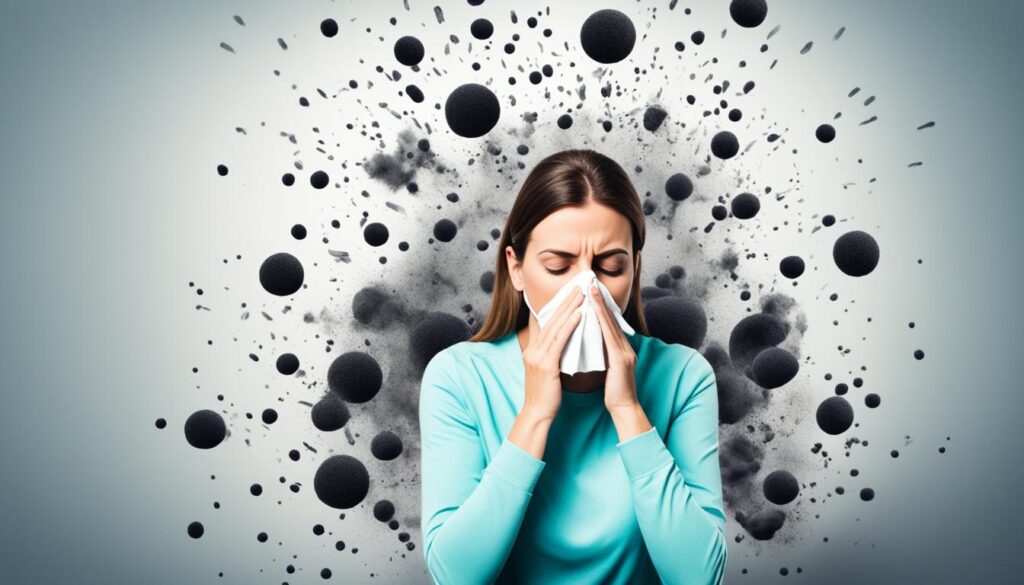
Dangers and Health Risks of Toxic Black Mold
When it comes to the safety of your home or workplace, it’s important to be aware of potential hazards that can affect your well-being. One such danger is toxic black mold, also known as Stachybotrys Chartarum. This type of mold can pose serious health risks, making it essential to understand the dangers and take appropriate action to protect yourself and your loved ones.
Toxic black mold is commonly found in areas with high humidity or water damage, such as basements, bathrooms, and areas affected by flooding. It thrives in damp and dark environments, and its spores can easily spread through the air, leading to mold exposure. The health risks associated with toxic black mold can range from mild to severe, depending on the individual’s sensitivity and the extent of exposure.
Exposure to toxic black mold can cause a variety of symptoms that affect both physical and mental well-being. These may include respiratory issues, such as coughing, wheezing, and throat irritation. In some cases, it can also lead to persistent headaches, fatigue, and allergic reactions. Prolonged exposure to toxic black mold can have more severe consequences, impacting the immune system and respiratory function.
It’s important to note that individuals with pre-existing respiratory conditions, weakened immune systems, or allergies may be more vulnerable to the health risks of toxic black mold. However, even those without prior health issues can experience adverse effects if exposed to elevated levels of mold spores.
Key Takeaways:
- Toxic black mold can pose significant health risks when present in homes or workplaces.
- It thrives in damp and dark environments, such as basements and bathrooms.
- Exposure to toxic black mold can result in respiratory issues, headaches, fatigue, and allergic reactions.
- Those with pre-existing respiratory conditions or weakened immune systems may be more susceptible to the effects of mold exposure.
- Taking prompt action to prevent and address mold issues is essential for maintaining a safe and healthy environment.
Identifying Mold Poison Symptoms
When it comes to mold exposure, early detection is crucial for ensuring your safety. Being able to identify the symptoms of mold poisoning can help you take appropriate action and prevent further health risks. In this section, we will discuss the various signs that may indicate mold poison symptoms.
Mold poisoning can affect individuals differently, and the symptoms can vary depending on the type of mold and the extent of exposure. However, there are some common symptoms to watch out for. These include:
- Respiratory issues: Wheezing, coughing, and shortness of breath are common respiratory symptoms of mold exposure. If you notice these symptoms worsening when you are indoors or in specific areas of your home or workplace, it may be a sign of mold poisoning.
- Allergic reactions: Mold can trigger allergic reactions in susceptible individuals. Symptoms may include sneezing, runny nose, itchy or watery eyes, and skin rashes. Pay attention to these allergic responses, as they could indicate the presence of mold.
- Headaches and fatigue: Persistent headaches and fatigue can also be signs of mold poison symptoms. If you frequently experience these symptoms and they seem to worsen in certain environments, it is important to consider mold exposure as a potential cause.
- Neurological symptoms: Some individuals may experience neurological symptoms due to mold exposure. These can include difficulty concentrating, memory problems, dizziness, and confusion. If you notice these cognitive issues alongside other symptoms, it is crucial to seek medical attention.
Remember, mold poison symptoms can vary from person to person, and it is important to consult a healthcare professional for an accurate diagnosis.
To illustrate the symptoms of mold poisoning, refer to the table below:
| Symptoms | Common Signs |
|---|---|
| Respiratory Issues | Wheezing, coughing, shortness of breath |
| Allergic Reactions | Sneezing, runny nose, itchy or watery eyes, skin rashes |
| Headaches and Fatigue | Persistent headaches, fatigue |
| Neurological Symptoms | Difficulty concentrating, memory problems, dizziness, confusion |

By being aware of these symptoms and their potential connection to mold exposure, you can protect yourself and your loved ones. If you suspect mold poisoning, it is important to address the issue promptly by seeking professional help and conducting a thorough assessment of your living or working environment.
Preventing and Addressing Mold Issues
Preventing mold growth and addressing mold issues promptly are essential steps in maintaining a healthy environment in your home or workplace. By conducting mold assessments and implementing effective mold remediation strategies, you can minimize the risk of mold-related health problems and ensure the safety of yourself and your family.
The Importance of Mold Assessments
A mold assessment is a comprehensive inspection conducted by professionals to identify the presence of mold, assess its extent, and determine the appropriate remediation measures. It involves thorough visual inspections, moisture measurement, sampling, and laboratory testing, if necessary.
Mold assessments are crucial for early detection of mold growth, especially in hidden or hard-to-reach areas. Identifying mold colonies at an early stage allows for swift remedial action, preventing the spread of mold spores and minimizing damage to the property.
Additionally, a mold assessment can help identify the specific type of mold present, its potential health risks, and the underlying causes of mold growth. This knowledge enables targeted remediation efforts and helps prevent future mold infestations.
Effective Mold Remediation Strategies
Mold remediation involves the safe and thorough removal of mold and the underlying moisture source to prevent its recurrence. Professional mold remediation companies follow established guidelines and industry best practices to ensure effective and long-lasting results.
Here are key steps involved in the mold remediation process:
- Containment: Professionals establish containment barriers to prevent the spread of mold spores to unaffected areas. This includes the use of physical barriers and negative air pressure machines to create a controlled environment.
- Removal: Mold-infested materials, such as damaged drywall, carpeting, or insulation, are safely removed and disposed of according to appropriate protocols.
- Cleaning: Affected surfaces are thoroughly cleaned using specialized techniques and antimicrobial agents to eliminate mold spores and prevent regrowth.
- Drying and Moisture Control: Effective drying measures are implemented to remove excess moisture and address the underlying cause of mold growth, such as leaks or inadequate ventilation.
- Verification: After remediation, third-party mold assessors may conduct post-remediation assessments to verify the successful removal of mold and ensure the restoration of a safe indoor environment.
Reducing the Risk of Mold Growth
While professional mold assessments and remediation are crucial, there are also preventive measures you can take to reduce the risk of mold growth in your surroundings. Consider the following:
- Maintain Proper Ventilation: Ensure proper ventilation in bathrooms, kitchens, and other areas prone to moisture buildup. Use exhaust fans or open windows to improve airflow and reduce humidity.
- Control Moisture Levels: Promptly fix any leaks or water damage. Regularly inspect plumbing systems, roofs, and windows for signs of moisture intrusion. Keep indoor humidity levels below 50%.
- Reduce Clutter: Cluttered spaces can impede proper airflow and create conditions ideal for mold growth. Keep your living and working areas neat and organized.
- Monitor Indoor Humidity: Use a hygrometer to regularly measure humidity levels in your home or office. If humidity becomes consistently high, consider using dehumidifiers to maintain optimal levels.
By following these preventive measures and addressing any potential moisture issues promptly, you can create an environment inhospitable to mold growth.
Remember, prevention is key when it comes to mold issues. Regular mold assessments, effective mold remediation strategies, and proactive measures to reduce moisture levels can play a significant role in maintaining a healthy living or working space.

Conclusion
Understanding the dangers and health risks associated with toxic black mold is essential to protect yourself and your loved ones. Mold exposure can have significant consequences on your well-being, so it is crucial to be aware of the potential harm it can cause and how to identify mold poison symptoms.
By recognizing the signs of mold poisoning early on, you can take prompt action to mitigate the risks. Symptoms such as respiratory issues, skin irritation, allergies, and persistent headaches should not be ignored, as they could indicate black mold exposure.
Prevention is key when it comes to mold dangers and health risks. Regular mold assessments in your home or workplace, especially in areas prone to moisture, can help detect and address mold growth before it becomes a serious problem. Prompt and effective mold remediation is crucial in maintaining a safe and healthy living environment.
Remember, black mold exposure can have a detrimental impact on your health. By staying informed, taking preventative measures, and addressing mold issues promptly, you can minimize the risks and ensure a safe and healthy living space for yourself and your family.




